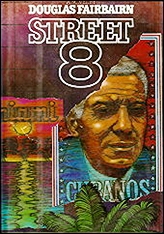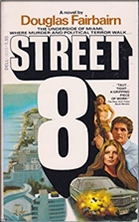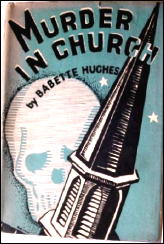Sat 6 Feb 2010
Reviewed by William F. Deeck: BARBARA FROST – The Corpse Died Twice.
Posted by Steve under Authors , Bibliographies, Lists & Checklists , Crime Fiction IV , Reviews[8] Comments
William F. Deeck
BARBARA FROST – The Corpse Died Twice. Coward McCann, hardcover, 1951. No paperback edition.
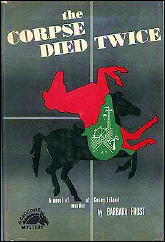
Though suffering from a severe hangover, Jerome Carrigan doesn’t feel he deserves the obituary published in a New York City newspaper. He calls upon Marka de Lancey, attorney at law, to investigate it and also asks her to check on an insurance policy he is considering purchasing. She doesn’t have time for the latter since Carrigan is found dead in a Turkish bath at Coney Island under suspicious circumstances.
This is de Lancey’s second murder investigation with Lieut. Jeff McCrae of Manhattan Homicide. It is a moderately amiable non-fair-play novel.
Bio-Bibliographic Data: According to Al Hubin in the Revised Crime Fiction IV, Barbara Frost (married name Barbara Frost Shively) was a publicity manager for J. B. Lippincott Co., an obvious rival to Coward McCann, who was the publisher of her four mystery novels.
Bill is correct in saying that this is Marka de Lancey’s second appearance. He did not mention that there was a third, however, nor that Ms. Frost’s first crime novel was not a series entry. One source on the Internet suggests that the police lieutenant’s name was spelled “Macrae.” It is not presently known if he appeared with Marka de Lancey’s in all three of her cases.
FROST, BARBARA. 1903-1985. Note: Marka de Lancey appeared in books two through four:
The Unwelcome Corpse (n.) Coward 1947.
The Corpse Said No (n.) Coward 1949.
The Corpse Died Twice (n.) Coward 1951.
Innocent Bystander (n.) Coward 1955.
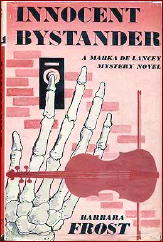
Editorial Inquiry: Marka de Lancey’s first appearance was in 1949, making her perhaps one of the earliest female attorneys to appear in crime fiction. Who may have preceded her in this category?
[UPDATE] 02-08-10. See comment #3. It isn’t a definitive answer, but if Jon Breen doesn’t know of any other female attorney who was a lead character in a mystery novel and who came before Marka de Lancey, then my money’s on the fact that there weren’t any.




